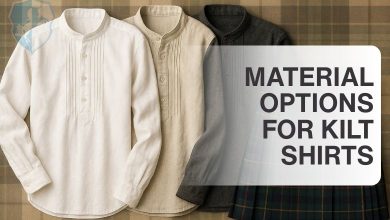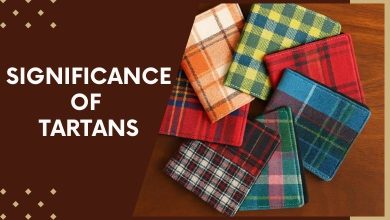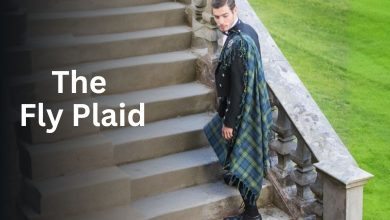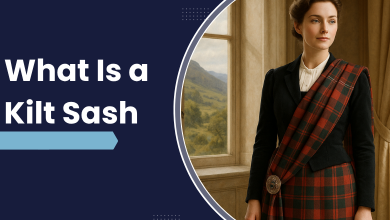Tartan Fabric Weaving Techniques and Much More
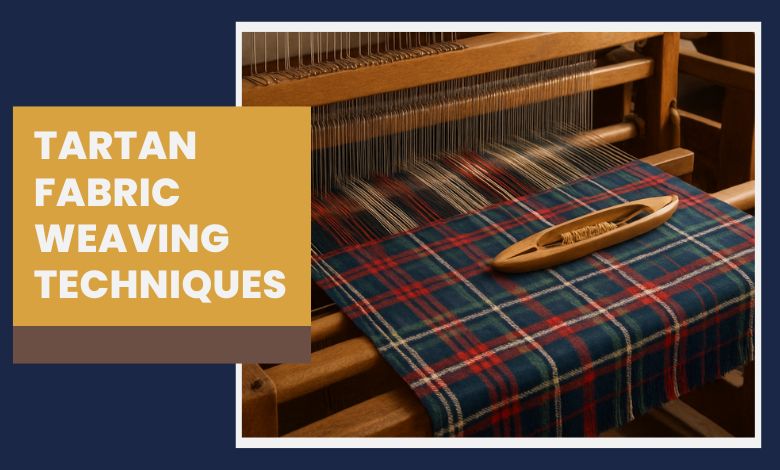
Tartan is the traditional fabric of Scotland historically used to make kilts for men before the introduction of other fabrics. This particular fabric has unique traits that reveal the past of weavers even today. Traditionally they were hand woven while machines have taken this responsibility. Therefore, tartan fabric weaving techniques are a bit different than other clothes. This article will talk about the weaving process of Scottish fabric. Moreover, we will discuss the role of thread count, mistakes made during the process, and much more. So, without a delay, let us dive into this interesting discussion!
Characteristics of Tartan
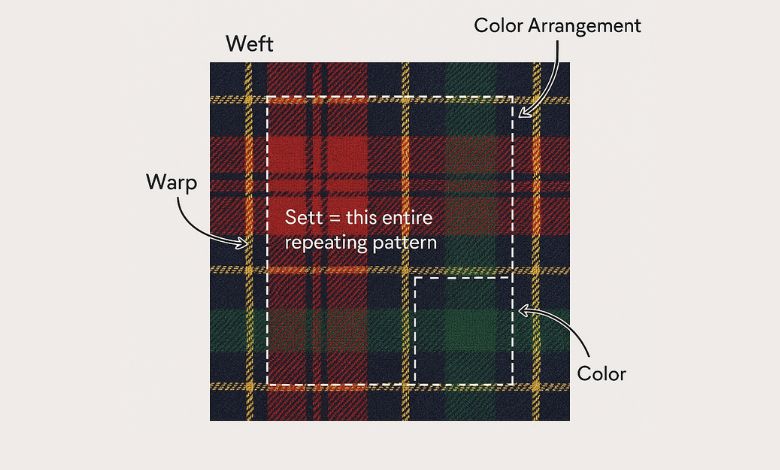
Tartan fabric usually has intersecting lines and different colors offering them unique designs. This design is called the checkered one. The pattern is created by repeating a sequence of colored lines in both the warp and weft threads that result in a consistent design with alternating colors. The main traits of the tartan are:
Warp: A warp refers to the lengthwise yarns held parallel on a loom and form the backbone of a woven fabric.
Weft: The next thing is the weft, which is the horizontal threads to create the structure of design. Threads passing the warp create it. In short, it helps tartan ensure a proper shape.
Sett: The term might be new to many but sett is not a new thing. It refers to the number and pattern of colored threads making stripes. It repeats a repeating pattern of colored threads in a tartan, consisting of stripes in specific widths and colors. It defines the unique design of a tartan, with each sett creating a distinct look for different patterns.
Color arrangement: The repetition of sett horizontally and vertically made with colorful threads is known as the color arrangement of tartan fabrics.
Tartan Fabric Weaving Techniques
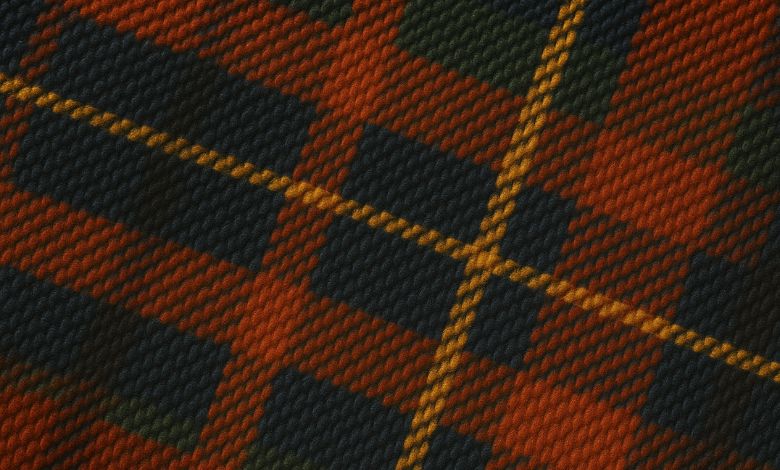
2/2 twill weave is the most traditional one but still makes the fabric. The 2/2 twill weave is ideal for tartan because its diagonal pattern provides durability and flexibility, allowing the fabric to withstand wear. This traditional weave also ensures the tartan’s colors are vibrant and sharp, maintaining the integrity of the design while offering a smooth, refined finish.
Other techniques include plain weave, broken twill, etc., but they are not suitable for making tartan. The 2/2 twill weave is a fundamental textile pattern characterized by its diagonal rib or wale appearance, created by weaving over two warp threads and under two warp threads, then repeating this pattern.
It’s a balanced weave, meaning the pattern uses the same amount of warp and weft yarns. This structure results in durability. The tartan drapes well making it suitable for various uses like workwear and denim.
The Role of Thread Count in Weaving Fabric
As the name suggests, thread count refers to the number of threads used in making the patterns. It decided on the shades used in warp and weft, moreover, the size of the fabric and complexity of patterns depends on thread count. In other words, the number of threads impacts the density, texture, and visuals. So, a bit of carelessness in this aspect may require more struggle. Let us make it easier for you, thread count is what helps people to recognize their clan tartan.
Common Weaving Mistakes in Tartan and Their Expert Fixes
Now that you know the traits of tartan and what techniques make fabric, it’s time to move ahead and see what mistakes people usually make while weaving tartan. Similarly, they also need a proper solution so hard work pays.
Misaligned Threads
Misalignment of threads sounds like a small error but can ruin the aesthetics of tartan. This problem occurs when warp and weft do not precisely align. To fix this problem, artisans must ensure careful inspection, adjustments during weaving, and hand-darning or repair work.
Skipped or Broken warp/weft Threads
The flow or structural consistency of both vertical and horizontal threads is important in making sett durable. Unfortunately, the uniformity breaks due to unexpected problems which result in skipping or broken thread at some points. A popular way to fix such issues is to replace the thread using a weaving needle to re-establish the flow.
Color sequence errors
Color sequence problems can arise during tartan weaving, particularly when changing weft colors frequently or using less common colors. The key is to ensure that the weft thread ends combine appropriately to avoid loops, knots, or visible imperfections. The fixing process might be a bit daunting since the craftsman has to recount the number of threads where the sequence disturbs and modify it according to the requirement.
The Role of Material in Weaving Tartan
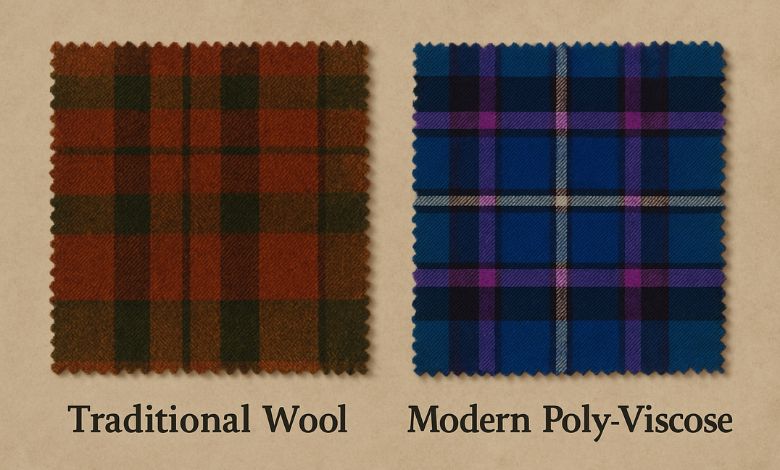
The material used in tartan weaving is crucial in defining the fabric’s texture, durability, and appearance. Traditionally, wool is the primary choice because it offers warmth and flexibility to a specific level. Similarly, it can hold vibrant dyes.
Moreover, fiber’s natural elasticity ensures the fabric can maintain its shape, while its softness enhances comfort. Therefore, modern tartans may also use synthetic fibers like poly-viscose which can also provide durability and water resistance. In short, the material choice impacts the overall feel and longevity of the woven tartan fabric.
Why Traditional Tartan Weaving Still Matters
Whenever we talk of tartan fabric, Scottish cultural heritage unintentionally touches our minds. However, the traditional tartan fabric weaving technique plays a role in the continuity of practice for a longer time. These skills are often passed down through generations, helping to preservetraditions and create economic opportunities. Above all, this traditional weaving technique contributes to sustainability.
Final Thoughts
The traditional tartan fabric weaving technique is still adaptable worldwide, especially in Scotland or the Highland region. The technique is the 2/2 twill weave process which intersects warps with weft with a specific thread count to ensure a proper design of the fabric. Some mistakes like misaligned threads, broken threads, and color sequence errors still occur. Therefore, understanding how to fix these mistakes is crucial. Similarly, the quality of the fabric also impacts the process, so being careful about it is important too!
